Find out where it came from, how it is celebrated, and how it has affected Halloween today.
It’s the time of year when the veil between our physical world and the spiritual realm is believed to thin.
A time when the ancient Celts celebrated the end of the harvest season and the start of winter.
Samhain, an ancient festival with deep roots in Celtic and Irish mythology, is pronounced “sow-in”.
Samhain is a festival that was once celebrated all over Ireland and by Celtic societies all over the world. It is often called the Celtic New Year.
This article may contain affiliate links. If you click on one of them, we might receive a small commission (at no extra cost to you). Thanks for your support to help us keep this site running!
Table of Contents
- 1 What is Samhain?
- 2 When is Samhain?
- 3 Samhain Meaning
- 4 Samhain Spelling
- 5 How do you pronounce Samhain?
- 6 Samhain Origin
- 7 Samhain Symbols
- 8 Samhain Rituals and Samhain Traditions
- 9 Happy Samhain – Samhain Blessings
- 10 Happy Samhain in Irish
- 11 How to Celebrate Samhain?
- 12 Samhain Colors
- 13 Samhain Foods
- 14 Samhain Recipes
- 15 Samhain FAQ
- 16 Celebrating Samhain: Discover more
What is Samhain?
At the center of Halloween customs is Samhain, a traditional Celtic festival that dates back thousands of years.
In fact, this ancient Celtic festival can be dated back to the 9th century and even earlier.
Samhain, often considered the Celtic New Year, symbolized the end of the “lighter half” of the year and the beginning of the “darker half”.
The Celts believed that during Samhain, the veil between the physical world and the world of the spirits became thinner.
Thus allowing deceased family members and loved ones and souls to return.
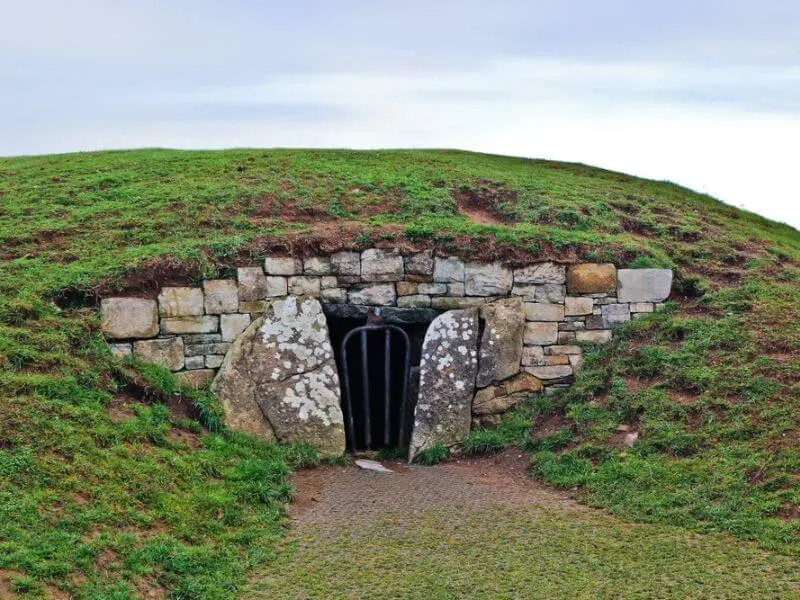
Some place, such as the Mound of the Hostages at the Hill of Tara, were thought to be locations were the boundary between the physical world and the Otherworld was particularly “thin” at this time of year.
Sunlight from sunrise enters the Mound of the Hostages at around Samhain. This is due to its particular alignment.
(The a similar occurance takes place in the Newgrange passage tomb and Cairn T at Loughcrew during the winter solstice.)
The Samhain festival was also full of fire festivals, with bonfires being a big part of the celebrations.
These fires were meant to bring light into the darkness of winter, which was coming soon.
Halloween Samhain Transition
Samhain’s religious parts eventually merged with Christian holidays, especially All Hallows Eve (also known as Halloween) and All Saints Day.
This is how many of the Halloween traditions we know today came to be. Especially in the middle ages, up until the 19th century, Halloween was called Samhain.
When is Samhain?
Samhain is traditionally observed from the end of the day on October 31st until the end of the day on November 1st.
This fits with the traditional time in Europe and marks the change from October to November.
It is midway between the autumn equinox and winter solstice (or the full moon closest to that date).
The time to celebrate Samhain for those in the southern hemisphere, however, is in April, when the days begin to get shorter and darker before winter.
Samhain is one of four major annual festivals that took place throughout the Gaelic year.
These four cross quarterly fire festivals are as follows:
- Imbolc (February 1) – festival midway between winter solstice and spring equinox)
- Beltane (May 1) – festival midway between spring equinox and summer solstice
- Lughnasadh (August 1) – festival midway between summer solstice and fall equinox
- Samhain (November 1) – festival midway between fall equinox and winter solstice
Samhain Meaning
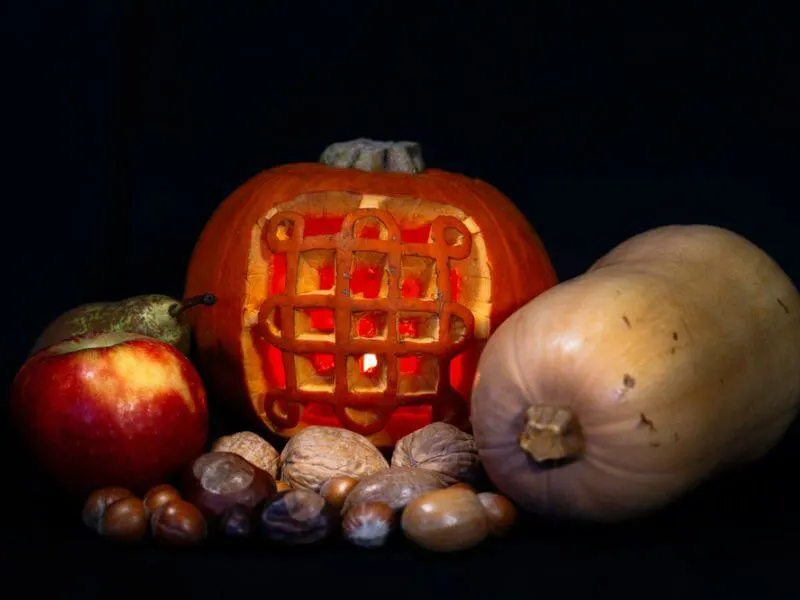
The word Samhain comes from the old Irish Gaelic word “Samhuin”, which means “the end of summer.”
Samhain marked the time when the world went from being bright in summer to being dark in winter.
This change was a sign of both the changing seasons and a spiritual journey from life to death.
The meaning of Samhain was based on an ancient Celtic belief that the living and the dead would meet again.
Samhain Spelling
Even though “Samhain” looks strange to English, German, Italian, and Spanish speakers, it is written the same way in Irish and Scottish Gaelic.
However, it is important to note that the Samhain pronunciation is very different from what you might think based on how it is written.
How do you pronounce Samhain?
While difficult for non-Gaelic speakers to pronounce, the word Samhain is usually pronounced as “sow-in,” with the “sow” sounding similar to the female pig.
No matter if you are a male or female speaker, this pronunciation is correct, and do not worry, it is all part of the charm of this ancient Celtic festival!
Samhain Origin
Samhain has deep roots that go back to the time when ancient Celtic communities were thriving in Ireland, Scotland, and other parts of Europe.
With the passing of thousands of years, it is hard to say exactly where the festival came from.
However, its influence on the culture of these areas is still clear.
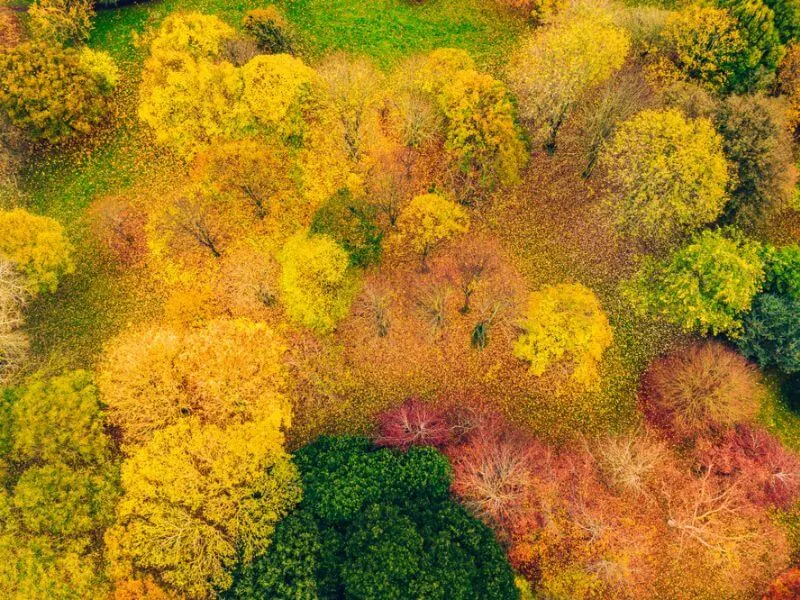
The Celts lived in the Iron Age in the area that is now Ireland and Great Britain and had a lifestyle that was close to nature and especially respectful of trees.
It is not surprising that the agricultural Celtic calendar was the center of their lives.
They divided the year into two parts. The light and the dark, or summer and winter.
Samhain, which may mean “summer’s end” in Irish Gaelic, marked this important change and announced the start of winter.
The festival was not just a way to say goodbye to a good summer, but also to welcome the inevitable arrival of winter.
Additionally, it was also a Celtic spiritual tradition.
The Celts thought that during Samhain, the veil between the physical world and the spiritual world was at its thinnest, letting the spirits of the dead return to their homes.
Samhain Origin of Halloween
Around the 4th century, as Christianity spread, the festival began to mix with Christian traditions.
This led to the Christian celebrations of All Hallows Eve (later called Halloween) and All Saints Day, which used many of the traditions of Samhain.
Samhain Symbols
The celebration of Samhain is rife with symbolism, with each component having a deep meaning.
From things that represent the spiritual world to things that represent the harvest, these symbols have a lot of different meanings.
The Wheel of the Year
The Wheel of the Year is a big part of Samhain celebrations because it shows how the Pagan year goes around and around.
Samhain is one of the eight points on this wheel, and it shows that the old year is over and a new one is starting.
Samhain is the beginning of the dark half of the wheel in the Northern Hemisphere.
Apples and Pumpkins
Apples, pumpkins, and other harvest fruits are signs of how much food was available during the past season.
They are often used in Samhain recipes, rituals, and as decorations.
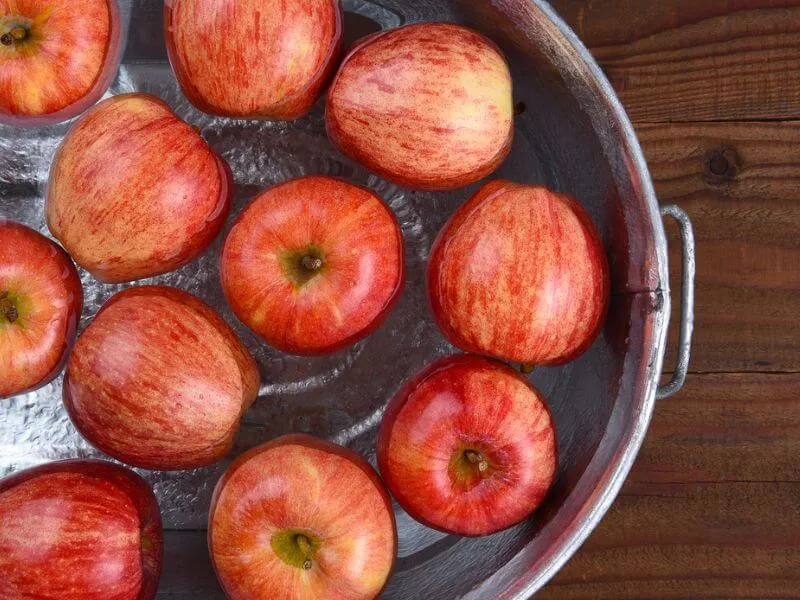
A traditional game called “bobbing for apples” is thought to have come from Samhain celebrations.
Samhain Altar Decorations
Samhain altars are frequently decorated with signs that represent both the harvest and the spirits of the dead, which are two important aspects of the festival.
Autumn leaves, acorns, and other signs of harvest, as well as photos or other mementos of deceased loved ones, are typical items on the altar cloth.
Altar candles are also common. They are often black and orange, which are the colors of Samhain.
Fire
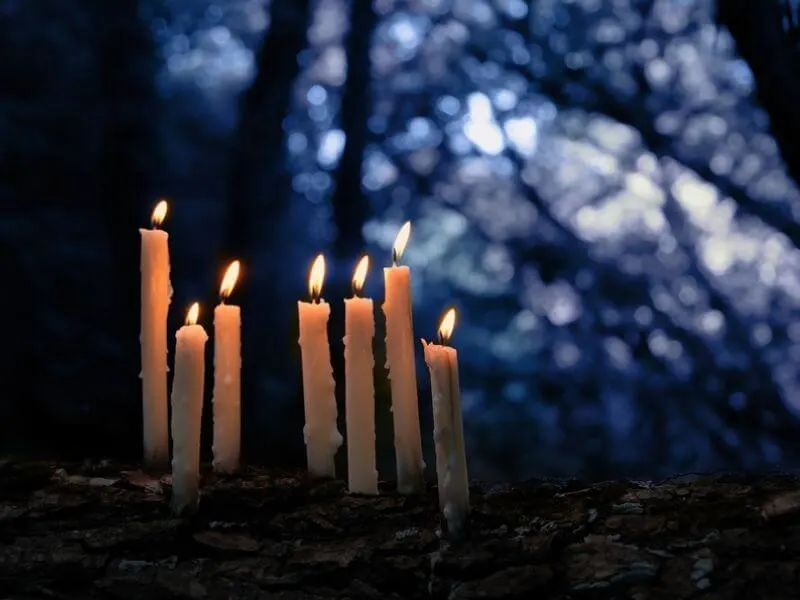
Samhain includes fire as one of its main symbols.
The Celts marked Samhain celebrations with huge community bonfires, which they thought would protect and clean them.
These bonfires were a light in the growing darkness of winter and a sign of the people’s sense of community.
It is also said that Druids used a community fire using a spinning wheel that would cause spark flames from the friction.
Jack O’Lanterns
Jack O’Lanterns are a well-known symbol of Samhain.
They are usually carved out of pumpkins or turnips.
On the night of Samhain, when the veil between the worlds is thinnest, people believe that they can keep away evil spirits and help lost souls find their way.
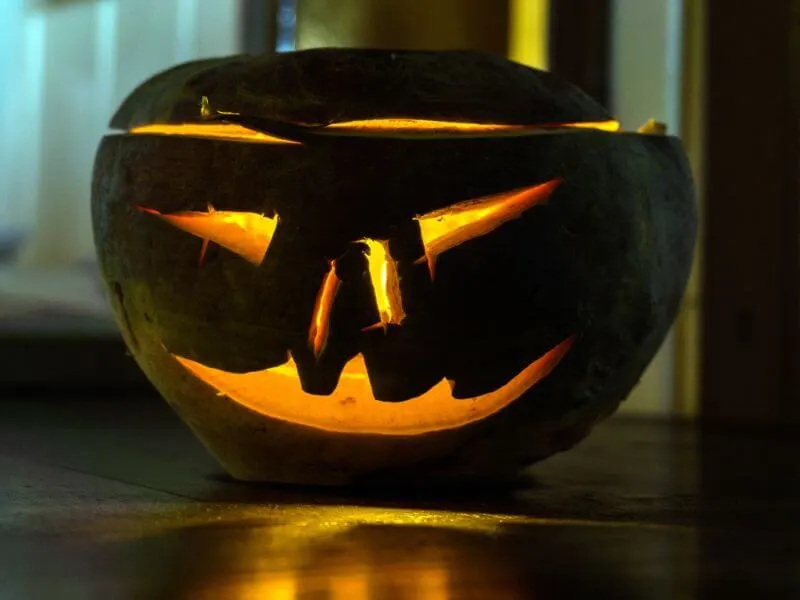
The Scythe and the Athame
The Scythe, which is used to gather the harvest, is a symbol of the “reaping” of life.
It shows the change from the lighter part of the year to the darker part, and it shows that death is a natural part of life.
At Samhain, the Athame, a ceremonial knife, is used to cut off the past year and make room for the new.
Straw Man
The Straw Man, also called the “Wicker Man”, is a symbol of the burning of crops or effigies as a sacrifice to the Celtic gods.
This was done to make sure that light and life would return in the spring.
Samhain Rituals and Samhain Traditions
Samhain’s many traditions and rituals are like a window into the past.
Over time, these practices have changed to include different cultural, religious, and historical influences.
However, they still honor the cycle of life and death and the thinning of the veil between the physical world and the spiritual realm, which is how they started.
Bonfires
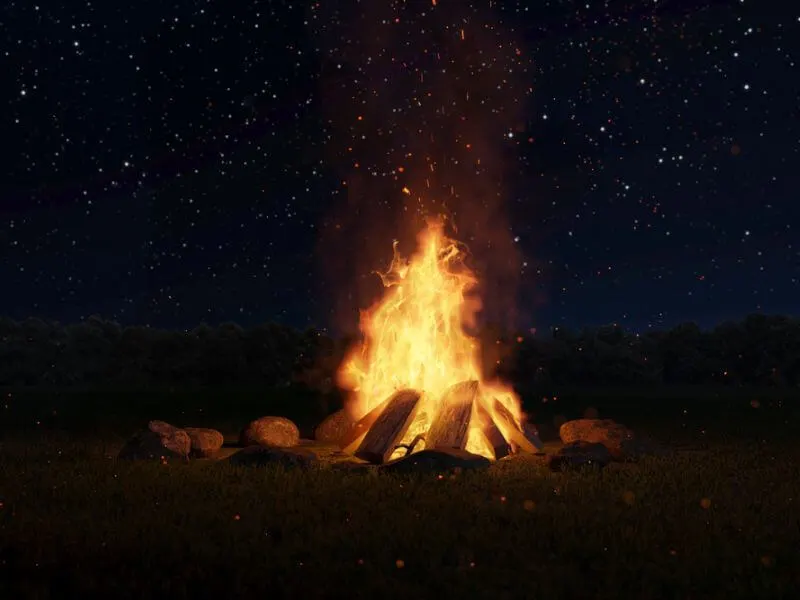
The Celtic people celebrated Samhain with a large bonfire in the ancient times.
People thought that these fires would clean and protect them from evil spirits that might try to cross over into the physical world at this time.
These people also used the flames of these holy fires to relight the fires in their homes. This was a sign of unity and community spirit.
Honoring the Deceased
The honoring of deceased lost loved ones is one of the most moving parts of Samhain.
This could mean setting a place at the dinner table for them, telling stories about their lives, or just lighting a candle in their honor in a little Samhain candle ritual.
The point is to remember and honor those who have died, letting them know that they are still with us in our hearts and lives.
For some thoughful ideas about Irish blessings for the deceased, we recommend you look at our indepth guide.
Divination
Since the spiritual world is close by at Samhain, divination rituals are often an important part of the celebrations.
People might use divination tools such as tarot cards, rune stones, scrying mirrors, or other things to try to figure out what the next year will bring.
The Dumb Supper
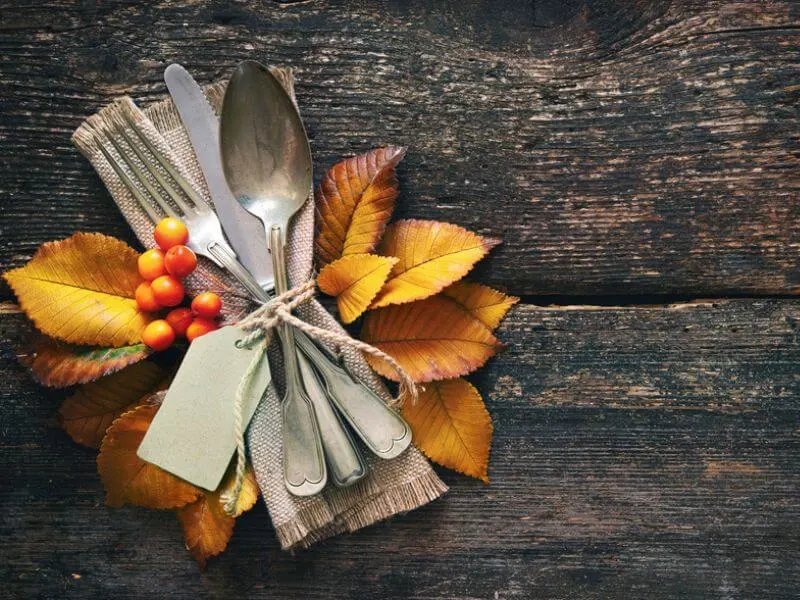
In honor of the dead, a “Dumb Supper” is a silent meal.
During this Samhain ceremony, a place is set at the table for deceased loved ones.
Everyone eats in silence to show respect and make it easier to hear any messages from the other side.
Jack-O’-Lantern Pumpkin Carving
The tradition of carving pumpkins into jack-o’-lanterns comes from an Irish story about a man named “Stingy Jack“.
This mean, trickster character was barred from heaven and hell because of the many unlikeable deeds he conducted during his life. He was doomed to an afterlife as an ember.
The lanterns were originally made from turnips and were meant to scare away evil spirits.
Costumes and ‘Guising’
Costumes, also known as “guising”, are a tradition that dates back to when people would dress up as evil spirits to avoid getting hurt.
It is said that already the Celts wore costumes on Samhain to defend themselves from spirits.
This has since changed into the Halloween tradition of dressing up and going door-to-door, which is similar to the old tradition of begging for “soul cakes.”
Happy Samhain – Samhain Blessings
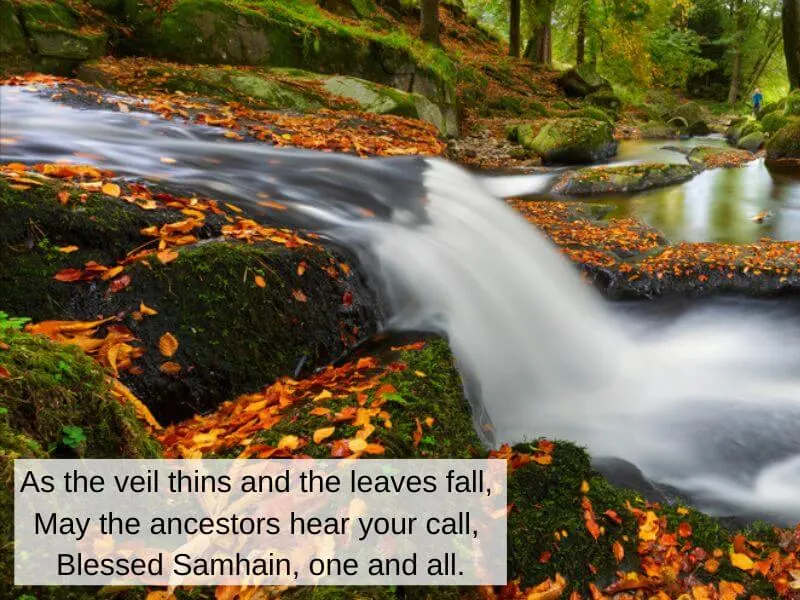
“Happy Samhain” is a warm way to share the holiday spirit with someone and is similar to a “Happy Halloween”.
It is also traditional to give blessings on Samhain, which are often written in the form of poems or sayings.
We have a complete guide to blessings for Samhain if you would like to delve deeper into this topic.
Two of these Celtic Samhain blessings might be:
As the veil thins and the leaves fall,
May the ancestors hear your call,
Blessed Samhain, one and all.
Another one is by Stephanie Laird:
Greetings this Samhain, marking the end of the year,
As we remember the departed souls we hold dear,
The end of one cycle, the beginning of the next,
May all your days forward be abundantly blessed!
Discover the blessings for the Beltane celebration here.
Happy Samhain in Irish
Oíche Shamhna shona duit (when wishing one person)
(Pronounced: EE-heh HOW-nuh hun-ah ditch)
Oíche Shamhna Shona Daoibh (when wishing multiple people)
(Pronounced: EE-heh HOW-nuh hun-ah DEE-eve)
How to Celebrate Samhain?
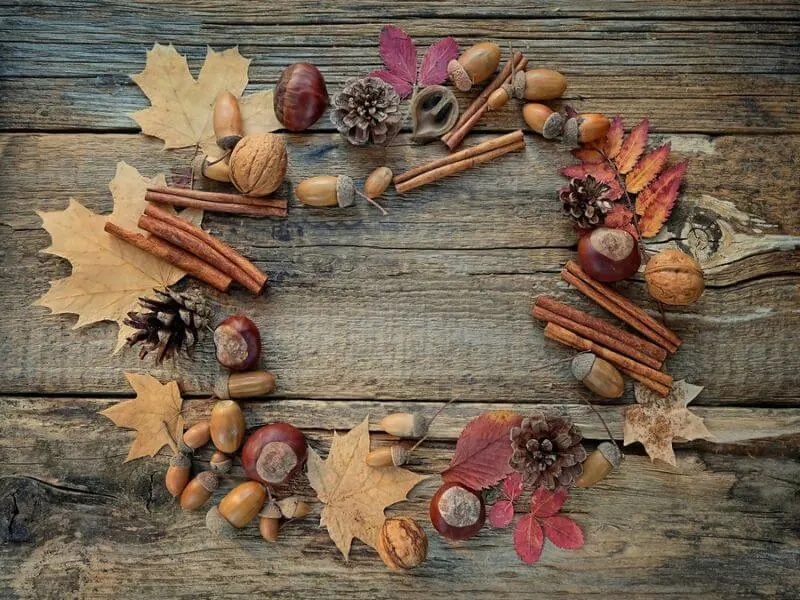
Samhain is a time to remember, think, and celebrate, and there are many ways to honor this holy festival.
Here are some ways to get into the spirit of Samhain, from time-honored traditions to new takes on old ones.
Honor the Ancestors
Make an altar for your loved ones who have died.
You can decorate it with photos, the person’s favorite things, candles, fall leaves, and anything else that seems right.
Take a moment to think about them, tell stories about them, and press your gratitude for their impact on your life.
Light a Bonfire
Fire is one of the most important parts of Samhain celebrations. It stands for warmth and light as winter approaches.
If it is safe and possible, start a bonfire or a small fire in a cauldron or fire pit.
As you watch the flames, think about what you are ready to let go of and what you would like to bring into your life in the coming year.
Tip: You can also get some ideas from our guide to the Beltane rituals.
Cook a Feast
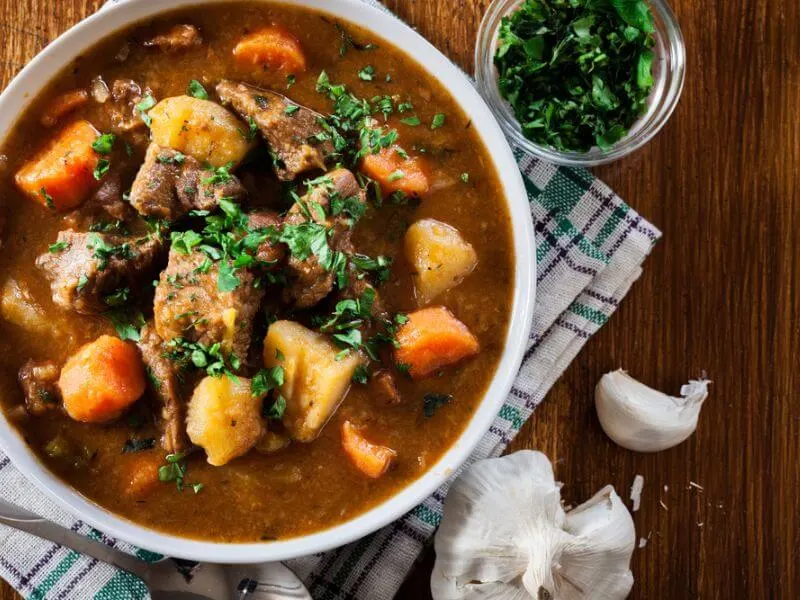
Make a feast with foods that are in season, like pumpkins, apples, root vegetables, and nuts.
If it feels right, you could set a place for your ancestors and invite their spirits to the feast.
Celebrate it with dear friends and / or spend time with family members.
Divination
Since the veil between the physical world and the spirit world is thinnest at Samhain, it is thought to be the best time to do divination.
You can find out about the past, present, or future by using tarot cards, runes, a scrying mirror, or another tool.
Wear a Costume
Dressing up is a fun way to embrace the fun side of Samhain. Samhain costumes can be a fun way to show different sides of yourself, play with archetypes, or just enjoy the silly spirit of the Samhain season.
Create a Samhain Blessing
Make your own Samhain blessing to honor the changing of the seasons, your ancestors, or the magic of this time between two seasons.
You could write this down, say it out loud, or just think about it.
Samhain Colors
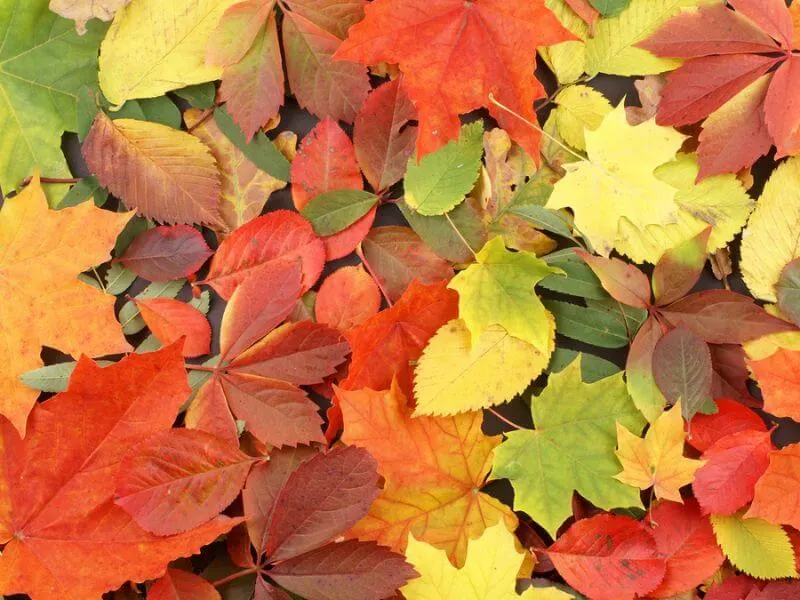
Samhain is most often linked to the colors black and orange.
Black means nighttime and the world of the dead, and orange means autumn.
Samhain Foods
Samhain is a festival of plenty that takes place at the end of the harvest season. It is closely linked to many traditional foods.
Many of these foods are best for your Samhain feast because they are harvested in the fall.
Let us take a trip through the tastes of Samhain through food.
Root Vegetables
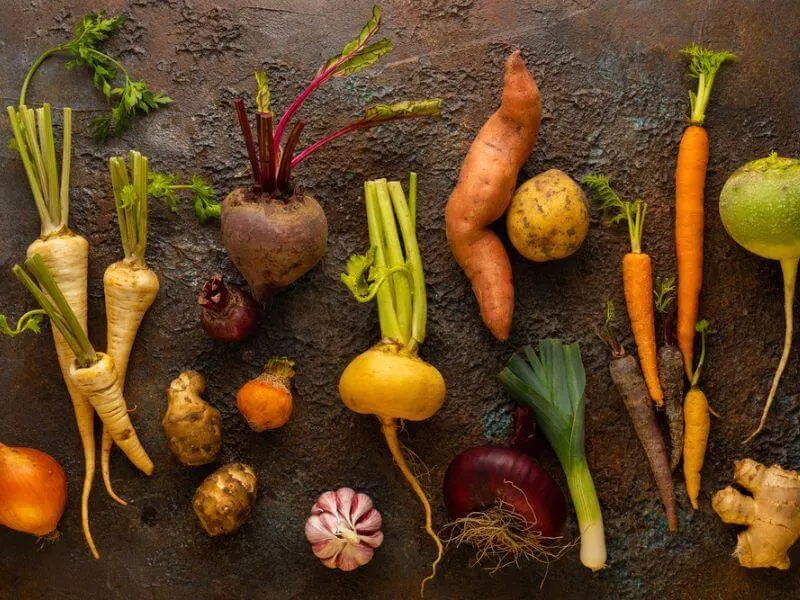
Traditional Samhain foods include turnips, potatoes, and carrots.
You can roast them, mash them, or put them in soups or stews.
The Celts thought turnips were very important.
They carved them into lanterns to keep away evil spirits.
Apples
Apples are another important Samhain food.
In Celtic mythology, apples are a sign of life and immortality.
As part of a fun Samhain tradition, they can be baked, turned into cider, or bobbed for.
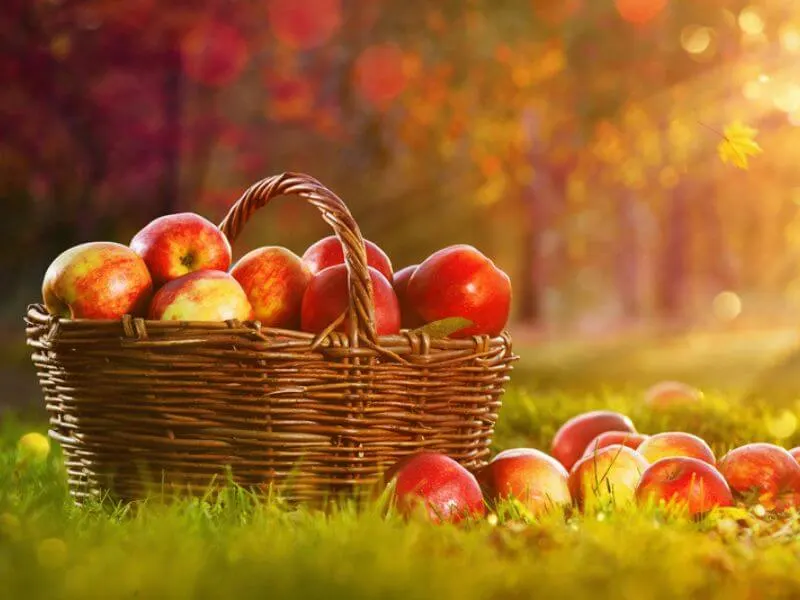
Pumpkins
Pumpkins were not originally a Celtic crop.
However, they have become associated with Samhain and Halloween because Irish immigrants in America took their turnip-carving tradition and made it work with pumpkins.
Pumpkins can be roasted, baked, or put in soups.
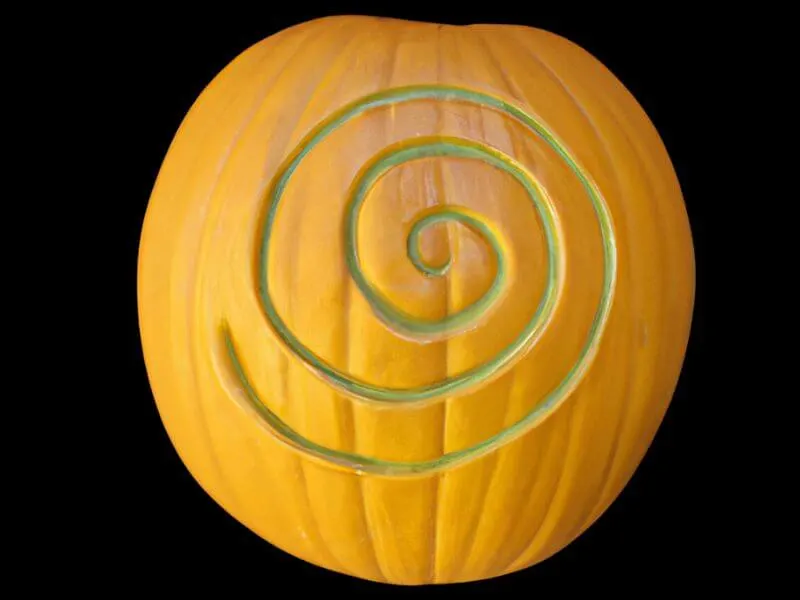
(Tip: discover more about Celtic spirals in our guide!)
Soul Cakes
Soul cakes are small round cakes that Christians traditionally make for All Souls’ Day.
This holy day is often the same day as Samhain.
They were given to “soulers”, who would sing and pray for the dead as they went from door to door. Most soulers were poor children.
Each piece of cake eaten would mean that a soul was let out of Purgatory.
Nuts
During Samhain, nuts, especially hazelnuts and walnuts, were often used in ancient Samhain rituals to find out about the future.
They were also a big part of the foods of the time.
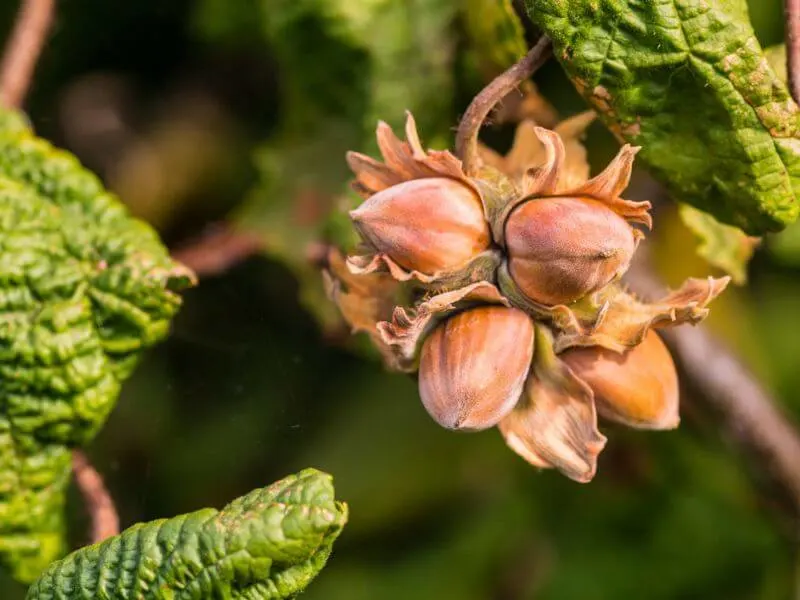
Meat and Poultry
Meat, especially pork, was frequently a big part of Samhain meals because it was the time of year when farmers chose which animals to kill for winter food.
Traditional Dishes
Samhain is a time when traditional Irish foods like colcannon (mashed potatoes with cabbage or kale) and barmbrack (yeasted bread with sultanas and raisins) are frequently consumed.
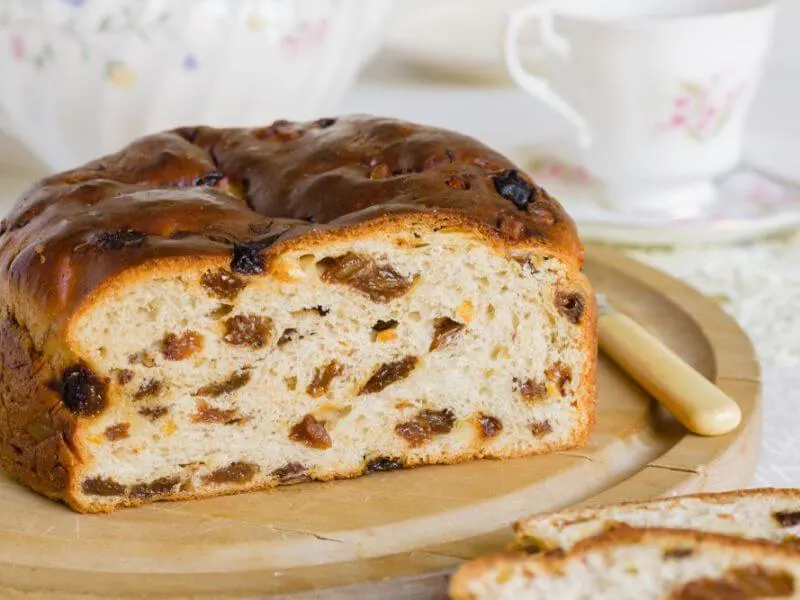
Consider making some of these traditional foods for your Samhain feast as a nod to the festival’s long history.
Not only will you be taking part in a centuries-old tradition, but you will also be enjoying the best of the season’s harvest. Enjoy!
Samhain Recipes
What better way to celebrate Samhain than with a home-cooked feast? Here are some traditional recipes you can make in your kitchen for your Samhain celebrations.
1. Traditional Irish Soda Bread
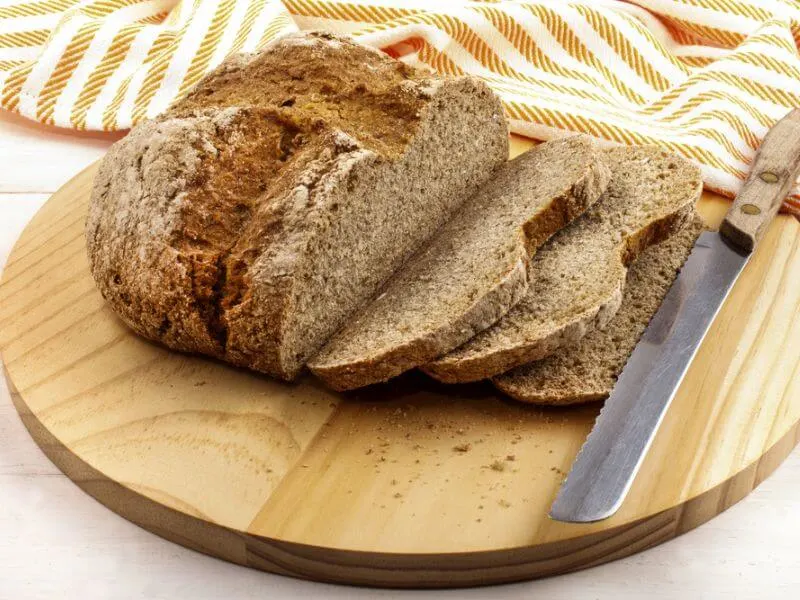
A classic Irish recipe, soda bread is easy to make and requires just a few ingredients.
- 4 cups of flour
- 1 teaspoon of baking soda
- 1 teaspoon of salt
- 14 ounces of buttermilk
Make a well in the middle of the dry ingredients and pour the buttermilk into it.
Mix until the dough is sticky, then lightly knead on a floured surface, shape into a round loaf, and cut a cross on top.
Bake for about 30 minutes at 425 degrees Fahrenheit (220 degrees Celsius), or until tapping the loaf makes a hollow sound.
2. Butternut Squash Soup
Warm and comforting, this soup is perfect for a chilly Samhain night.
- 1 butternut squash, peeled and cubed
- 1 onion, chopped
- 2 cloves garlic, minced
- 4 cups vegetable broth
- Salt and pepper to taste
- 1 teaspoon nutmeg
- 1 cup heavy cream
Cook the onion and garlic until soft in a large pot.
Add the squash, broth made from vegetables, salt, pepper, and nutmeg.
Bring to a boil, and then let the squash simmer until it is soft.
Use a blender to make the soup smooth, then stir in the cream and heat it slowly before serving.
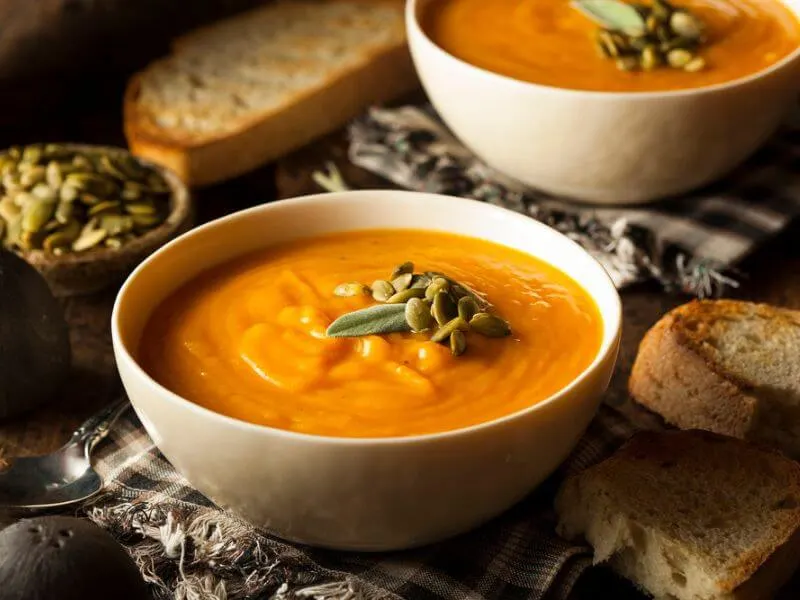
3. Soul Cakes
These sweet cakes are a traditional Samhain treat.
- 1 cup butter
- 3 3/4 cups flour
- 1 cup fine sugar
- 1/4 teaspoon nutmeg
- 1/2 teaspoon cinnamon
- 2 eggs
- 2 teaspoon of cider vinegar
- 4-6 tablespoons of milk
- Powdered sugar for sprinkling
Mix the sugar and butter until they are fluffy.
Add eggs one at a time while beating.
Mix the flour and spices in a separate bowl, then slowly add them to the butter and sugar mixture.
Add the vinegar and enough milk to make a dough that holds together well.
Roll out to a thickness of 1/4 inch and cut into circles.
Put on a baking sheet and bake at 350 degrees Fahrenheit (175 degrees Celsius) for 15 to 20 minutes, until lightly golden.
Sprinkle powdered sugar on them while they are still hot.
Making these dishes with your loved ones is a wonderful way to honor the ancient traditions of Samhain and start new ones.
So, put on your apron, get your ingredients, and bring the harvest season’s warmth and plenty into your kitchen.
Have fun cooking, and have a good Samhain!
Samhain FAQ
What is the belief of Samhain?
Samhain comes from the ancient Celtic belief that this is the time of year when the veil between our world and the spirit world is thinnest.
This makes it easier to talk to the dead and invites their spirits to come and visit us.
At the end of harvest season and the start of winter, it is also a time for looking back and taking stock.
What is Samhain and how is it celebrated?
The end of the harvest season and the beginning of winter are both celebrated at Samhain, an ancient Celtic festival.
Feasts, bonfires, and rituals to honor the dead are typically included in celebrations.
Ancestors and deceased loved ones are remembered and invited to celebrate with the living.
Due to the increased awareness of the spiritual world during Samhain, divination is also popular.
Is Samhain the same as Halloween?
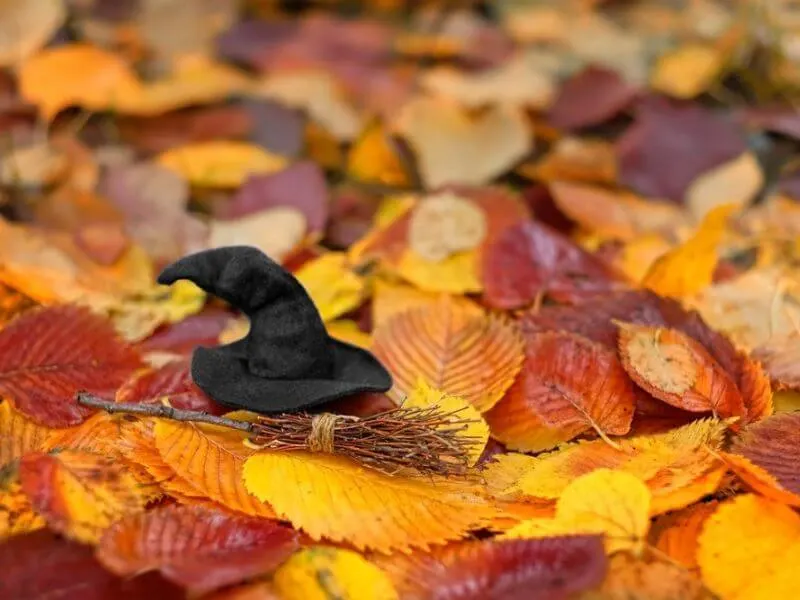
Samhain vs Halloween
Even though Samhain and Halloween have some historical connections and similarities, they are not the same.
Halloween began the night before All Saints’ Day, or All Hallows’ Day (November 1) in Christianity.
But many of the traditions associated with Halloween, like carving jack-o’-lanterns, come from Samhain.
Over time, Halloween has become a more commercial and nonreligious, pagan holiday, while Samhain has stayed a pagan religious holiday for those who celebrate it.
Who celebrates Samhain?
Many Pagans celebrate Samhain, especially those who follow Wicca and Druidry.
People who are interested in Celtic culture and history also celebrate it.
In the past few years, it has become popular again among people who like to celebrate traditional holidays.
Who was the god of Samhain?
In Celtic mythology, there is no Samhain God or Samhain Goddess (and also no Samhain demon).
However, the festival is often linked to the Aos Sí (fairies or spirits) and the Celtic gods of the harvest and the dead.
Most people think of the Dagda when they think of Samhain.
On Samhain, the Dagda is said to have coupled with the Morrigan, who is a goddess of battles and power.
Where is Samhain celebrated?
Samhain is traditionally celebrated in Ireland, Scotland, and the Isle of Man.
However, people all over the world recognize it in different ways, especially in pagan and Wiccan communities.
Celebrating Samhain: Discover more
The journey doesn’t end here! There is a lot more to learn about Samhain.
You can read about Irish mythology, which includes stories about the brave Fionn Mac Cumhaill, whose name comes up a lot around Samhain.
Alternatively, discover more about other Celtic festivals like Beltane or Calan Gaeaf by studying the Gaelic language.
Samhain is a celebration of both the changing seasons and of history and culture, so it is important to take the time to really understand it.
The Samhain Halloween Connection
Halloween is a festival with a long history and culture that still has an impact on modern traditions.
From its ancient Celtic roots to its modern Halloween celebrations, it gives us a deep connection to our ancestors and the natural world.
As the light of summer fades and the shadow of winter grows, may your Samhain be blessed with warmth, joy, and loving memories.
Discover more about November in Ireland here.
